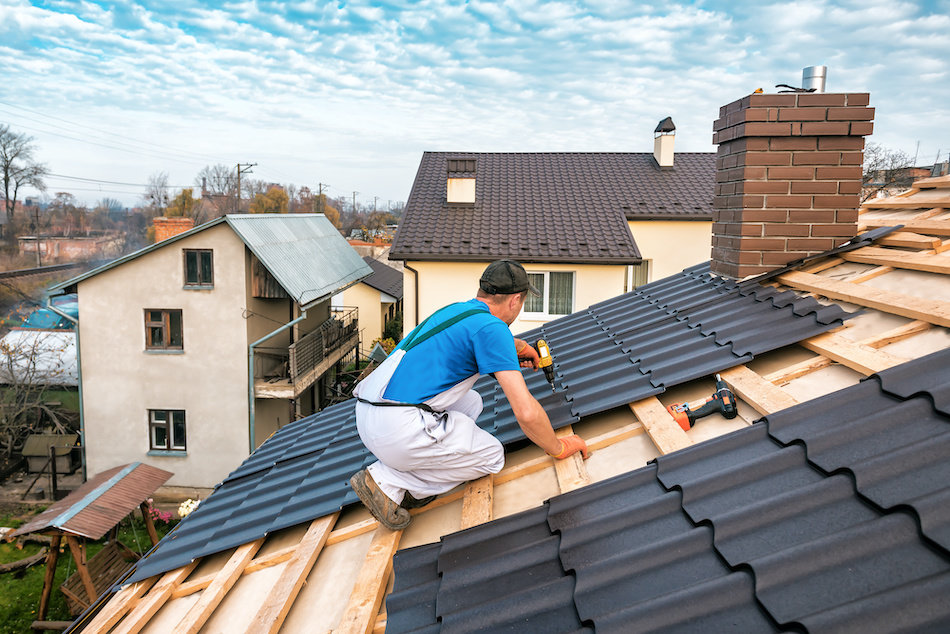The Top 5 Roofing Materials For Your Home
Posted by Lauren Schneider on Monday, June 21st, 2021 at 9:54am.
 The roof on every home eventually reaches the end of its lifespan. Residents in the market to purchase a new roof have plenty of options to choose from. When determining the best roofing materials for the home, it's important to consider several factors, including price, durability, and house style, along with weather and climate conditions. That being said, here are five popular roofing materials on the market.
The roof on every home eventually reaches the end of its lifespan. Residents in the market to purchase a new roof have plenty of options to choose from. When determining the best roofing materials for the home, it's important to consider several factors, including price, durability, and house style, along with weather and climate conditions. That being said, here are five popular roofing materials on the market.
For informational purposes only. Always consult with a licensed real estate professional before proceeding with any real estate transaction.
Asphalt
Asphalt is the most common roofing material homeowners choose when it comes time to purchase a new roof. Made of a woven fiberglass mat and covered with a waterproof asphalt coating, asphalt is economical, easy to install, complements many architectural styles, and comes in various colors. The primary drawbacks to asphalt are that this roofing type doesn't offer the same insulation quality as some other options, is more prone to leaks, and has a shorter lifespan than other roofing types (12–25 years, depending on the quality of shingle). To prolong an asphalt roof's lifespan, choose a premium-grade shingle.
Wood Shingles & Shakes
Many homeowners choose wood shingles and shakes for their attractiveness and high curb appeal. Considered a premium-style wood, wood shingles offer a “rustic” look and are typically constructed of cedar, southern pine, and redwood. Wood shingles are uniform and cut by machine, whereas shakes are thicker and give a more rugged look as each piece is slightly different from the others. The drawbacks to this roofing material are that it's more expensive to install, involves more effort to maintain, and is not a good option for homes located in regions prone to wildfires or humid and wet conditions.
Slate
Slate adds a pleasing aesthetic and comes in a wide variety of colors, giving an ability to add nice curb appeal. It's durable, sustainable, waterproof, and highly fire-resistant. They have a long lifespan (50–100 years) and can withstand any climate. Homeowners should only work with reputable slate manufacturers to benefit from this expensive roofing material, as some brands come from poor-quality quarries and won't offer the same durability benefits. The primary drawbacks to slate roofs are the expense and the need to include extra support due to the heaviness of the material.
Clay
Homeowners often prefer clay tiles for their roof replacement. They look high-end and add great curb appeal to a home. They generally work best with southwestern, Mediterranean, Italian, and Spanish-style homes. Clay roofs hold up well in coastal areas and hot climates, even withstanding the weathering associated with salt air, hail, and high winds. They are energy-efficient, non-combustible, and have a long lifespan (50–100 years). Like slate, clay tiles are expensive, heavy, and must be installed by an experienced professional. In some cases, structural reinforcement must be done, which adds to the overall cost.
Metal
Metal roofs were prevalent in the 18th century when people installed zinc, copper, and lead roofs. This trend has resurfaced in a big way, becoming quite a popular roofing option with homeowners choosing zinc, aluminum, copper, or stainless steel. The advantages to metal are many. While not inexpensive, metal roofs can be designed to resemble other popular roof types in a more lightweight and cost-efficient fashion. They are also durable, fire-resistant, heat reflective, withstand harsh weather conditions, and require zero maintenance. The lifespan of metal roofs is generally between 50 and 75 years.
Updating a roof is a terrific way to add a pleasing aesthetic, and, in some cases, roof replacements come with a high ROI depending on the materials used and how it's done. When determining ROI, homeowners should also factor in how long they plan to own the property in addition to the aforementioned other considerations. This helps to decide which roof type is the best option.
If a homeowner is looking to get the most energy efficiency—and thus the lowest electrical bill—out of their new roof as possible, they should consider upgrading their insulation as well. The less heat transfer between indoors and outside, the more easily heating and cooling systems can keep the home at the perfect temperature for the inhabitants' comfort.
For informational purposes only. Always consult with a licensed real estate professional before proceeding with any real estate transaction.
